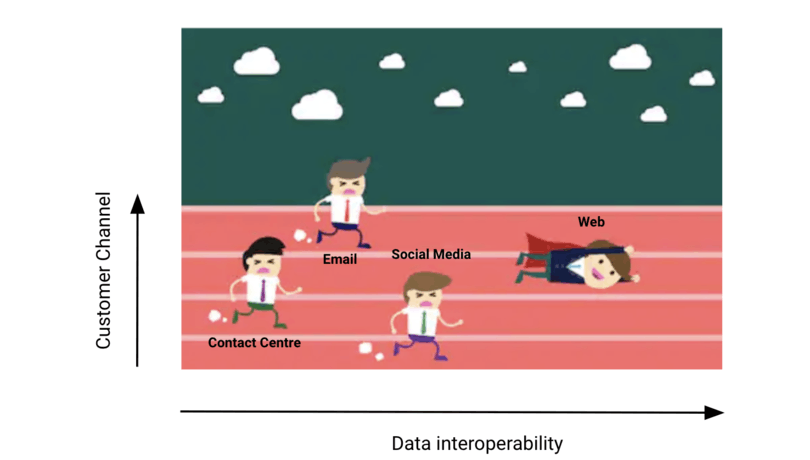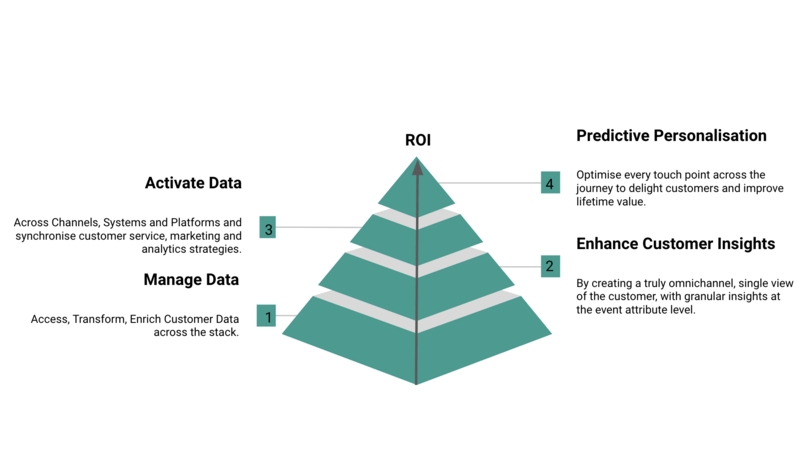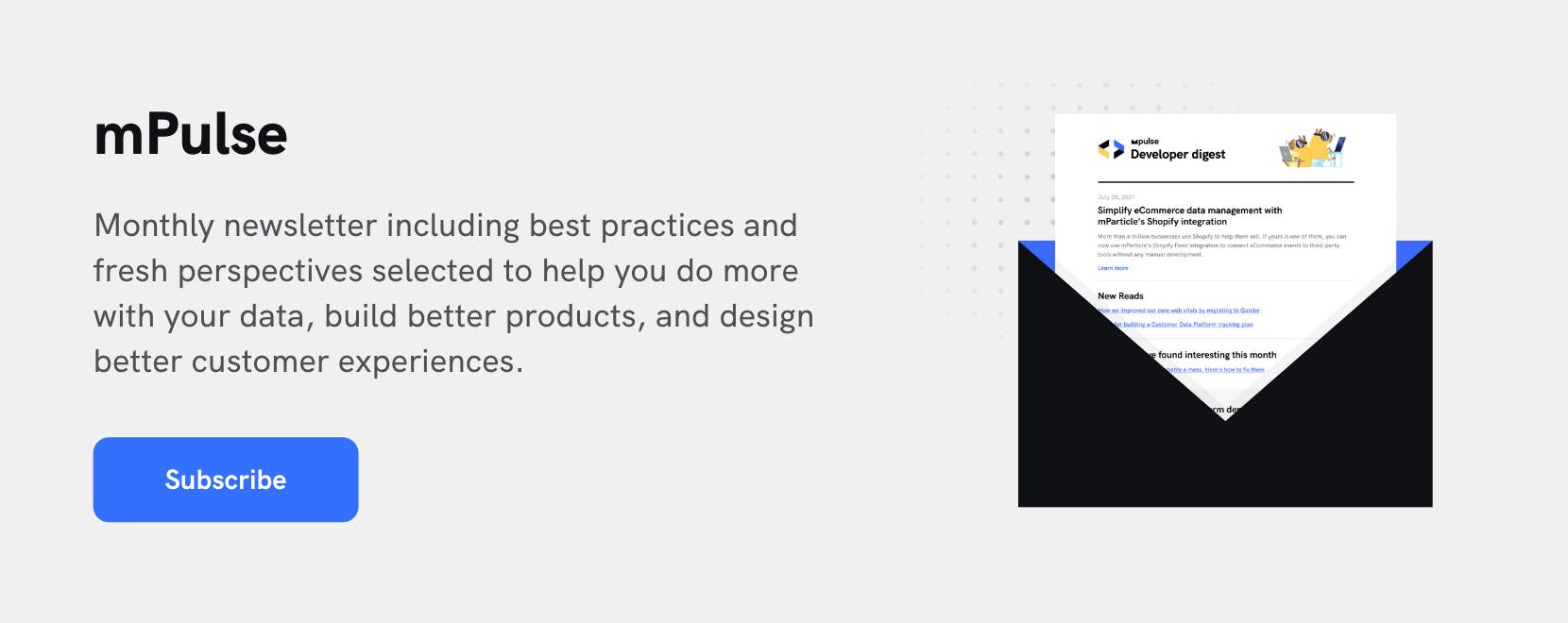The rise of big data in retail
The use of big data in Retail and eCommerce has opened up new possibilities for data-driven experiences, but few are leveraging engagement data to its full potential. Learn about the three fundamental data challenges retailers are racing to solve, their impact, and leading experts’ insight into the subject.

Consumers interact with brands in a series of moments, across many channels and devices whilst at home, on-the-go, and in the office. The proliferation of communications channels and evolving consumer habits means retailers can no longer rely on legacy systems and out-of-date strategies to serve their customers and accurately measure the influence of contact centre, marketing, and engineering initiatives on the bottom line.
In response to the changing ecosystem and the rapid development of new channels, as well as increasingly higher customer expectations, retailers and eCommerce brands have begun to reconsider their tech and marketing stacks in an effort to better leverage customer data and deliver higher caliber customer experiences. This has driven many retailers and eCommerce brands to begin to consider whether a customer data platform could provide the capabilities necessary to unify and orchestrate their customer data and optimize every touch point along the customer journey.
But, what is a CDP and why should you care? This blog will cover the three fundamental challenges that retailers are racing to solve, their impact, and leading experts’ insight into the subject.
Access to data
There is often an assumption that retail and eCommerce brands’ customer data issues result from a lack of data, when in fact it’s quite the opposite. In most cases, retailers have much of the data and many of the tools and data sources they need already in place; they just need a better way to leverage them.
Siloed customer data, a scattered identity graph, long development cycles and competing priorities across business units makes it hard to create a centralized and persistent customer profile which is accessible by other systems in a compliant and purpose-driven way.
As Gartner states in this thoughtful article, “It’s less about hierarchical control and more about networked cooperation.”
Data interoperability
Retailers today are drowning in the notion that offering a wide choice of communications channels is synonymous with a superior customer experience. Sadly, this approach is inherently flawed.
Brands are collecting more data than ever from a widening range of channels, systems and partners and that’s part of the problem. Too much data, from different sources, configured in different formats and managed by individual business units, makes it difficult to track the customer journey and get a single view of the customer.
According to Dimension Data 2019 CX Benchmarking report, Omnichannel strategy was a top-three trend for empowering CX delivery in 2017, yet only 8.4% currently have all channels interconnected.

Ability to act on first-party data
Every time customers browse or buy online, call customer service or complain on social media, a record of that interaction (a data artifact) is stored somewhere but likely not accessible by other systems for customer service, up-sell and marketing purposes (activation).
The problem isn’t a lack of data. Data is everywhere! Rather, it is the inability of customer service, marketing and analytics teams to act upon all first-party data in a way that drives meaningful outcomes for everyone.
For instance, if for any reason I was unable to complete a purchase online, I’d simply call the contact centre to arrange payment and delivery. Or is it really that simple? I don’t think so. The agent I connect with would likely have no insight into my recent online shopping experience, requested stock item (or perhaps even my loyalty card details). So I’d have to start from scratch and explain who I was, what I wanted to purchase and where I’d like the item to be delivered. My experience overall has been impeded as a result of me having to repeat myself and this prolonged period of time on the phone would negatively impact vital contact centre KPI’s—‘average handling time’ and ‘cost-to-serve.’
McKinsey Global Institute claim that data-driven organizations are 23 times more likely to acquire customers, 6 times as likely to retain customers, and 19 times as likely to be profitable as a result.
Data maturity for retailers
A retailer’s ability to deliver a superior customer experience every time is largely predicated on its ability to access, manage and activate first-party data in a meaningful, compliant and purpose-driven way. Before we can establish exactly where we need to go and how to get there, it’s probably worth figuring out where we are right now. How would you grade your organization’s current capabilities when based on the following data maturity model?

Until next time...
Customer Data Platforms promise to deliver unified customer data. But using that data depends on having the right set of capabilities for your particular objectives. Some of those capabilities will be provided by the CDP itself and others will be provided by other systems.
As the customer journey continues to fragment, selecting the right CDP requires identifying the capabilities you need, determining which of those your CDP should deliver, and then finding a CDP that meets your requirements.
Latest from mParticle
Try out mParticle
See how leading multi-channel consumer brands solve E2E customer data challenges with a real-time customer data platform.
Startups can now receive up to one year of complimentary access to mParticle. Receive access





